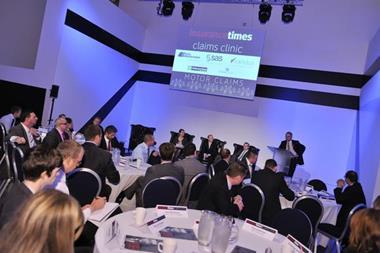Credit hire operators are no strangers to conflict with insurers, particularly in the past year. After a tough period for the sector, what is the future for a business model some say is unsustainable?
The past couple of years have not been good to the credit hire market. The recession has led to a slump in both the profits and margins of the sector’s main operators and many are struggling to survive.
Drive Assist has been under fire following whistleblowers’ allegations that it overcharged insurers for hire days, while Helphire continues to suffer under the weight of its £192m debt. Elsewhere, credit hire firm Accident Exchange has been waging a lengthy dispute over spot hire rates with reporting firm Autofocus, while becoming embroiled in lengthy legal battles with Allianz.
This has led to speculation on the sector’s future and whether the credit hire operator (CHO) business model itself needs to change. But CHO defenders say that they have simply been the victim of tough times as the number of cars on the road has decreased.
Director-general of CHO representative body the Accident Management Association Tony Baker says: “As a result of the recession, there have been fewer accidents because of less mileage and the body shops are not as busy. The repairs take less time to carry out, so the hire time is shorter. This has a bearing on cashflow and profitability and you have to accept and work around these factors.”
Defense strategies
Insurers, however, take a different view. They say they have become much better at devising defensive strategies and playing credit hire operators at their own game.
Groupama head of technical claims Steve Caffrey says insurers have become more effective in identifying exaggeration and errors in claims.
There are plenty of incentives for insurers to clamp down on CHOs. Credit hire is now estimated to cost insurers £600m and, according to law firm Beachcroft, 91% of traditional motor fraud cases contain an element of credit hire.
But some market commentators suggest that the current credit hire model is no longer sustainable. They argue that the traditional CHO is based on a ‘penalty’ model that simply no longer works.
According to the ABI’s 2004 General Terms of Agreement, which outlines the framework for the settlement of credit hire claims, insurers are liable for a 7.5% penalty fee after a 30-day delay, which then rises to 15% after 60 days. After 90 days, the CHO can issue court proceedings.
“The typical strategy of a CHO will be to submit the payment pack and work within a penalty model of 90 days. And they aggressively pursue that debt, whether through litigation or through aggressive recovery methods. It is a frictional process,” says Beachcroft credit hire technical and business development manager Craig Dickson.
Caffrey says margins that rely on penalty payments and insurers’ failure to identify the adjustable elements of the claim can no longer be sustained. “If CHO business models are built around insurer inefficiency and lack of technical capability, which would allow for these overstated claims to be paid, then it’s likely some CHOs will fail,” he says.
In addition, insurers point out that CHOs are likely to suffer from the work undertaken by Lord Young and Lord Jackson. “A number of CHOs receive ancillary income from traditional claims farming and that area is under the microscope. There will be some risk attached to the sustainability of the model as a result of the Young and Jackson reviews,” says Zurich motor claims director Karl Helgesen.
To add to the market’s woes, two high-profile court rulings in the past year involving Accident Exchange show that the courts appear to be putting their weight behind insurers in their ongoing battle with CHOs (see 'Credit hire in the dock', below).
Leaner and fitter
Allianz divisional claims manager (technical) Roy Hebburn believes the rulings have highlighted that CHOs will need to become “leaner and fitter” in order to survive. He predicts that the number of CHOs operating in the market – currently more than 800 – will dramatically reduce over the next couple of years. “I wouldn’t be surprised if as many as 50% fall by the wayside.”
However, there is a consensus that credit hire is here to stay. In spite of their fractious relationships, insurers have come to regard such operators as a necessary evil. While it has often been mooted that insurers could encroach upon CHOs’ territory and set up their own operation, most insurers believe the hassle and expense of doing so far outweigh any potential advantages.
“Insurers are traditionally good at insuring and claims handling and credit hire companies are good at credit hire. I don’t think there will be any other insurers trying to set up their own CHOs in the short to medium term. It is a far too complicated set up for insurers,” Caffrey says.
And while insurers are becoming more adept at third-party capture and providing replacement vehicles, Baker insists CHOs will continue to beat insurers in the race to reach the non-fault party. “If you are specialist in an area, you are going to be good at it. It is something insurance companies have struggled to emulate,” he says.
Ideally, insurers would like to enter into a supplier arrangement with CHOs, forging a contractual agreement with operators to supply vehicles to third parties. Under such agreements, insurers would control the volume of work directed to CHOs, who would in turn have to compromise by accepting much lower margins in return for guaranteed payments.
Even Baker believes that existing credit hire companies may be tempted to adapt their business structure to this model as it would provide a regular, guaranteed source of income.
Alternative model
At the moment, Enterprise Rent-a-Car is the only company in the market using this model. Insurance development manager Brendan Keane argues that Enterprise is a more appealing – and viable – alternative to credit hire for insurers.
He says: “There is always going to be a question mark over the credit hire model when the services they provide are at odds with the companies they seek to pay their bills. For us, the traditional CHO model doesn’t work.”
However, Baker points out that some insurers have a vested interest in avoiding going down this route. He believes insurers themselves have grown used to handsome referral fees from credit hire companies – a source of income they may be loath to lose in a tough financial climate.
“Insurance companies have got into a position where they can’t raid their reserves because there is nothing left,” he says. “There will be pressure from procurement people who argue that you get big commissions from credit hire companies.”
However, he predicts that traditional CHOs may yet experience a renaissance. “As the economy starts to improve, there will be more accidents and more pressure on garages. And that will mean longer hire periods. I think you could see happier times for CHOs.”
However, most insist the model will have to change and that insurers have the upper hand in dictating what form the model will take.
As Allianz’s Hebburn says: “Insurers have greater financial might than CHOs. That is not a threat. It is just a fact of life.” IT
Credit hire in the dock
Credit hire operators have fallen foul of two high-profile legal rulings. In June, Allianz won a landmark case over credit hire firm Accident Exchange, which attempted to charge £33,450 for the use of a replacement car. The final claim was reduced to £3,000 in the Court of Appeal.
The insurer was also involved in another credit hire claim involving Sunderland and England footballer Darren Bent and Accident Exchange. Following the collision, Bent was referred to Accident Exchange and hired an Aston Martin DB9 for 94 days.
The insurer successfully challenged the period of hire, the rate claimed and the need for the hire in the Court of Appeal.






































No comments yet